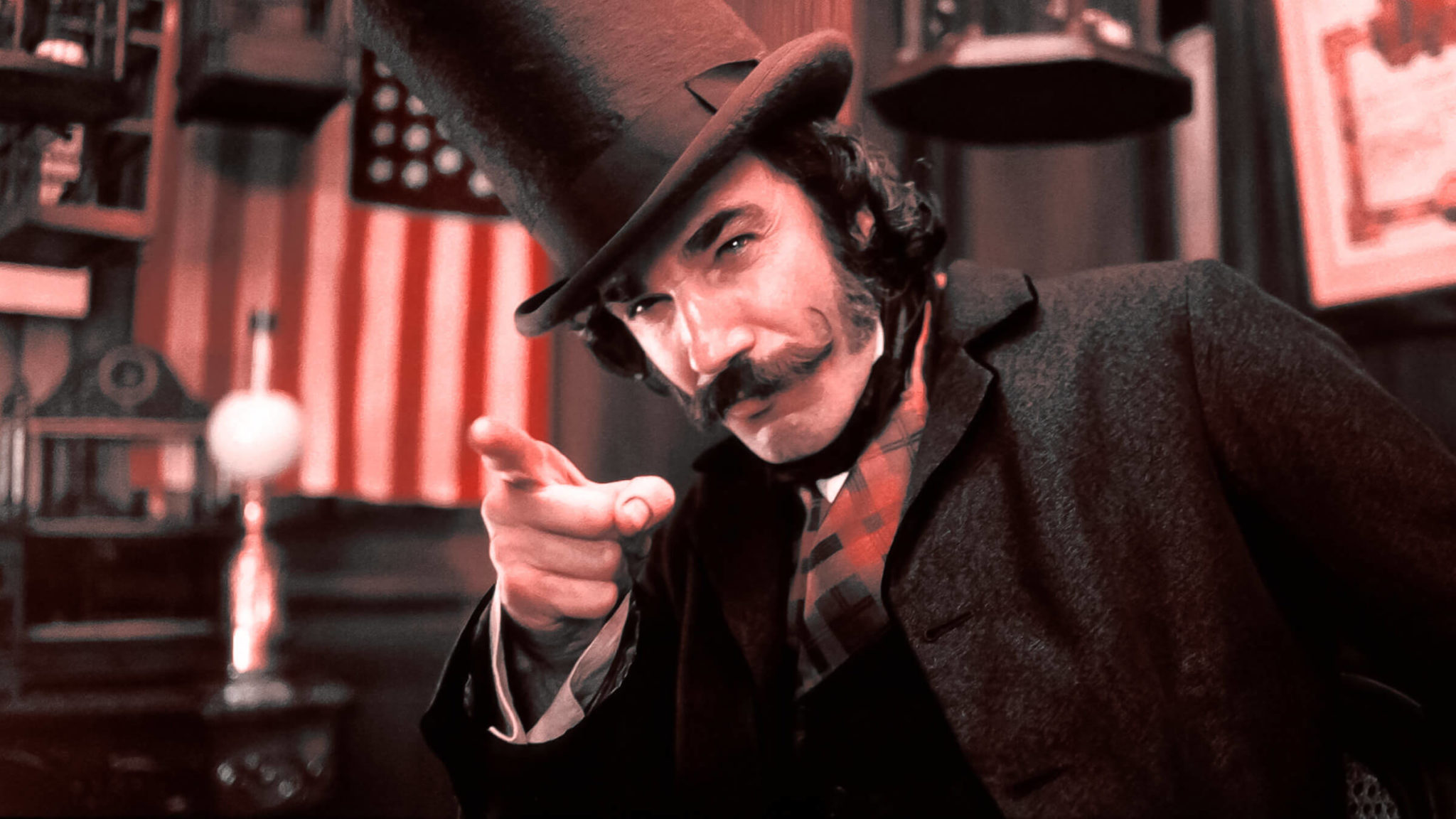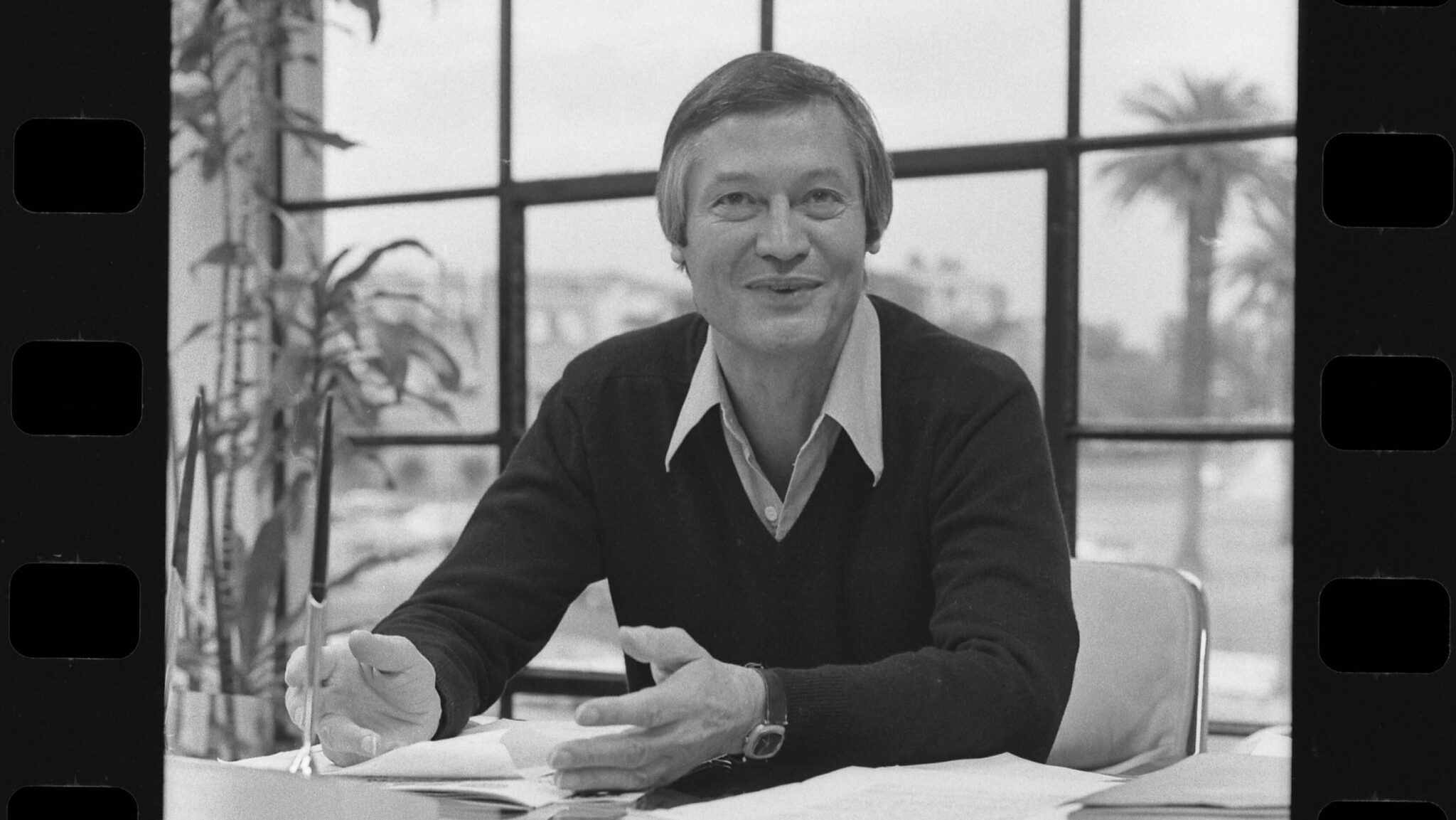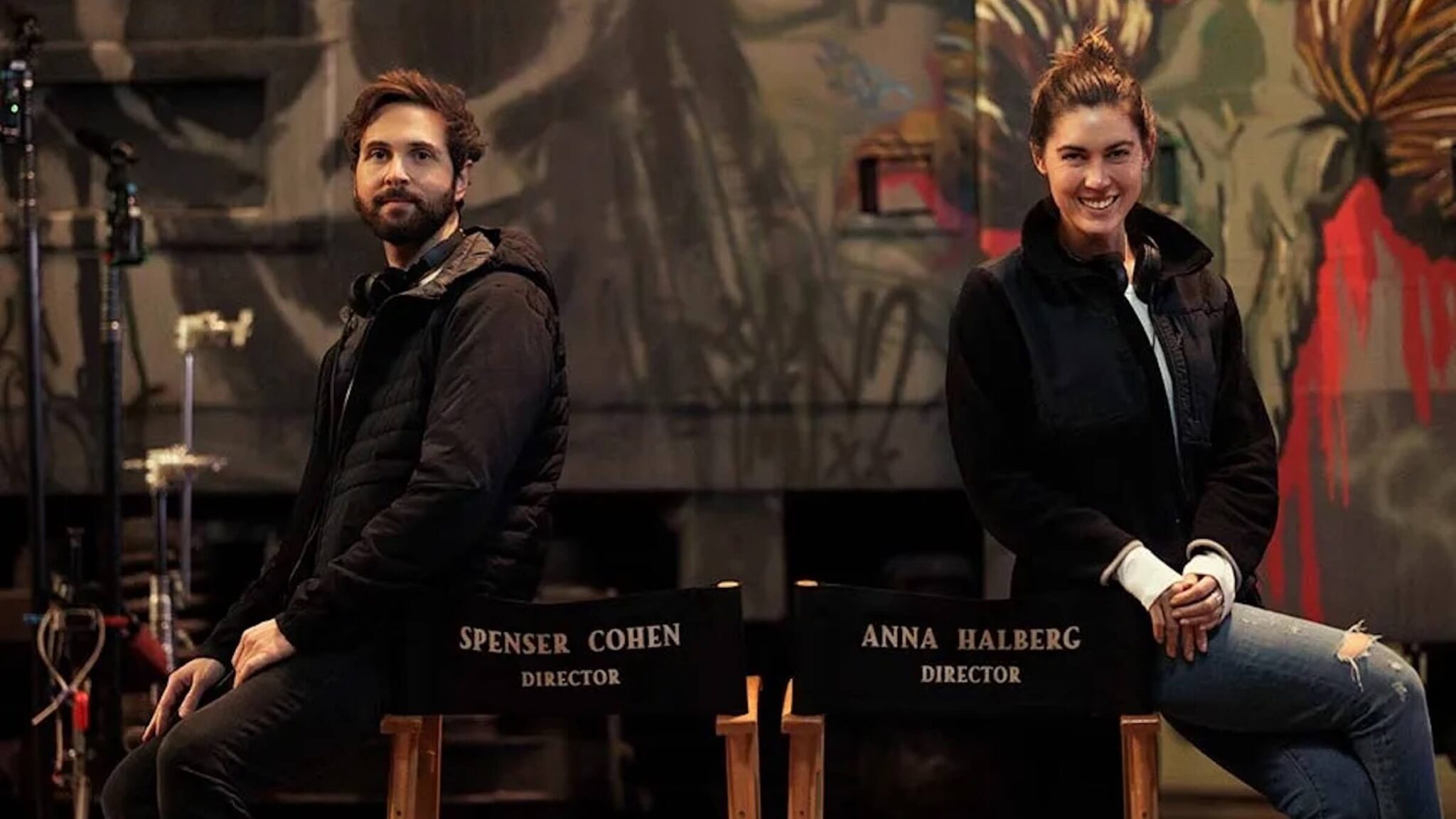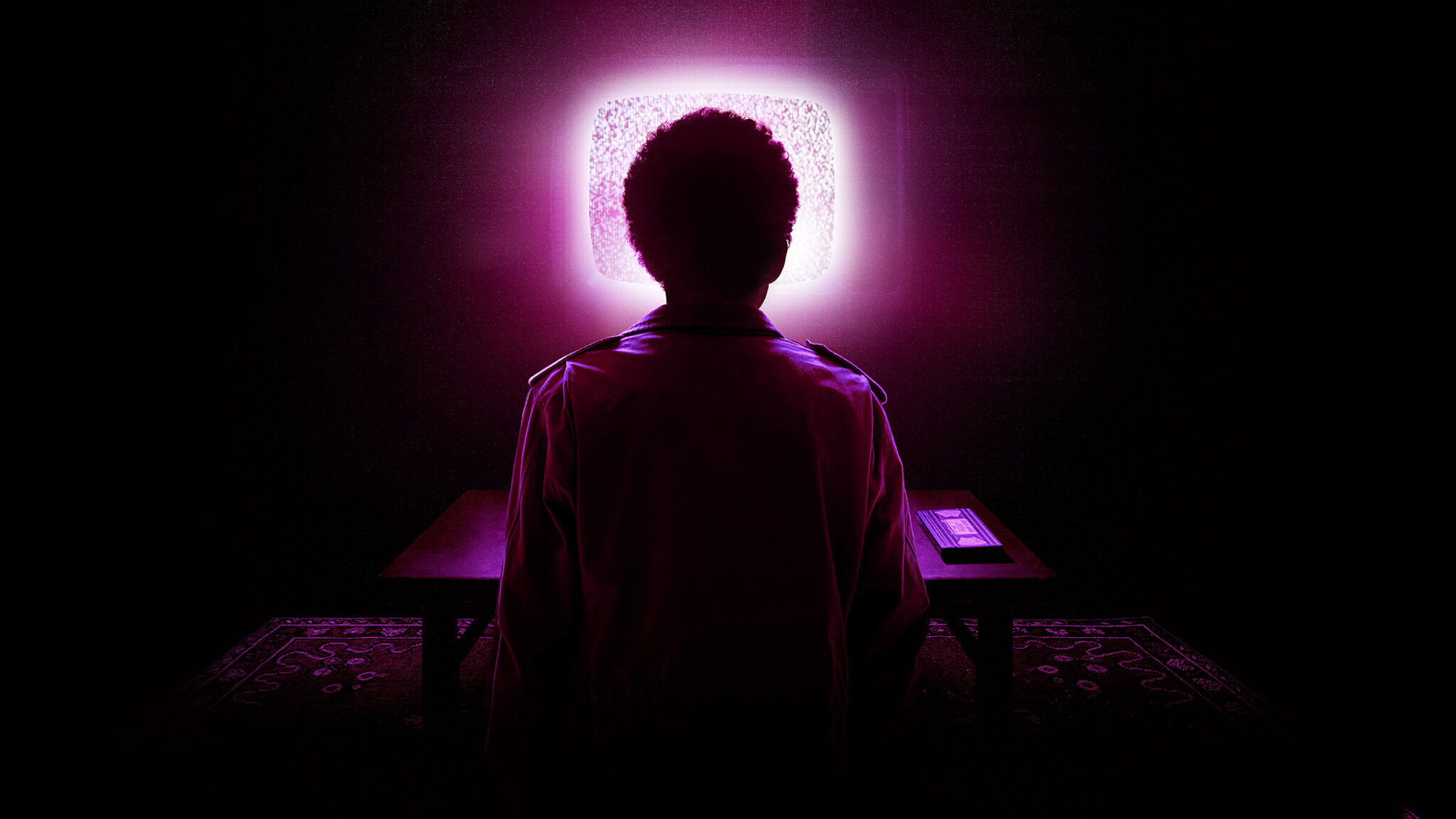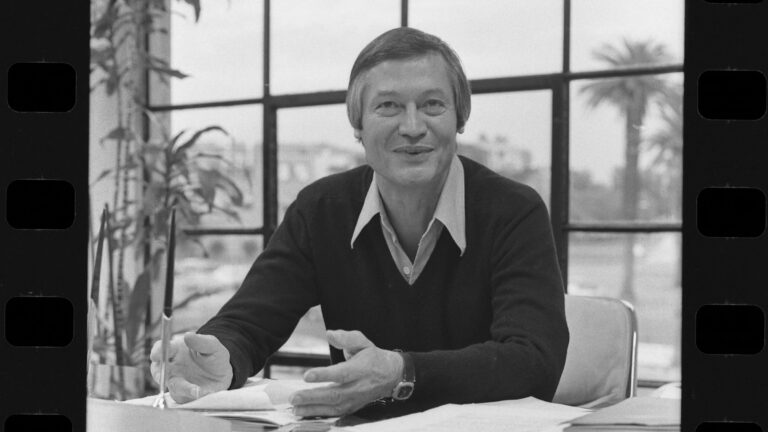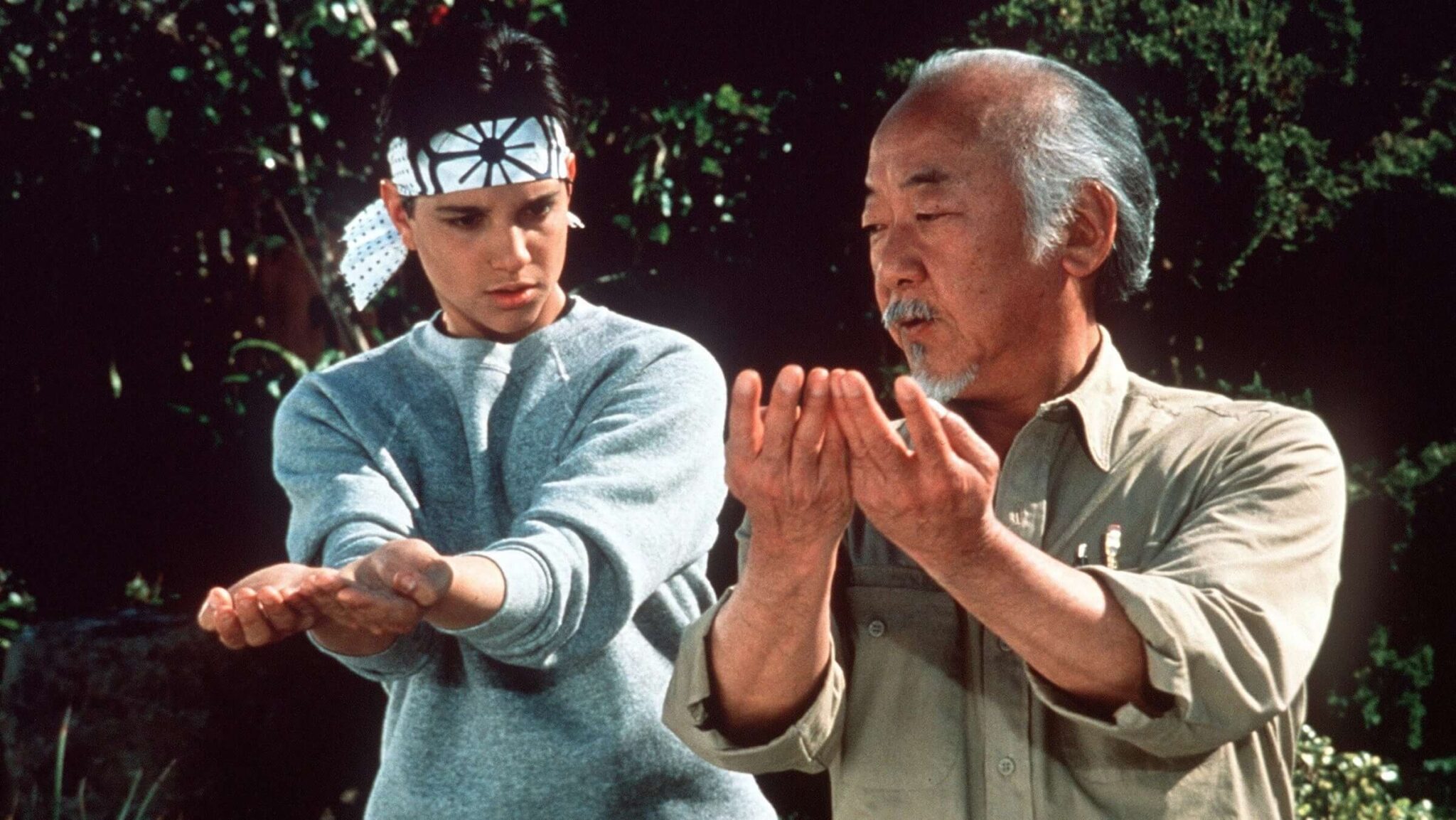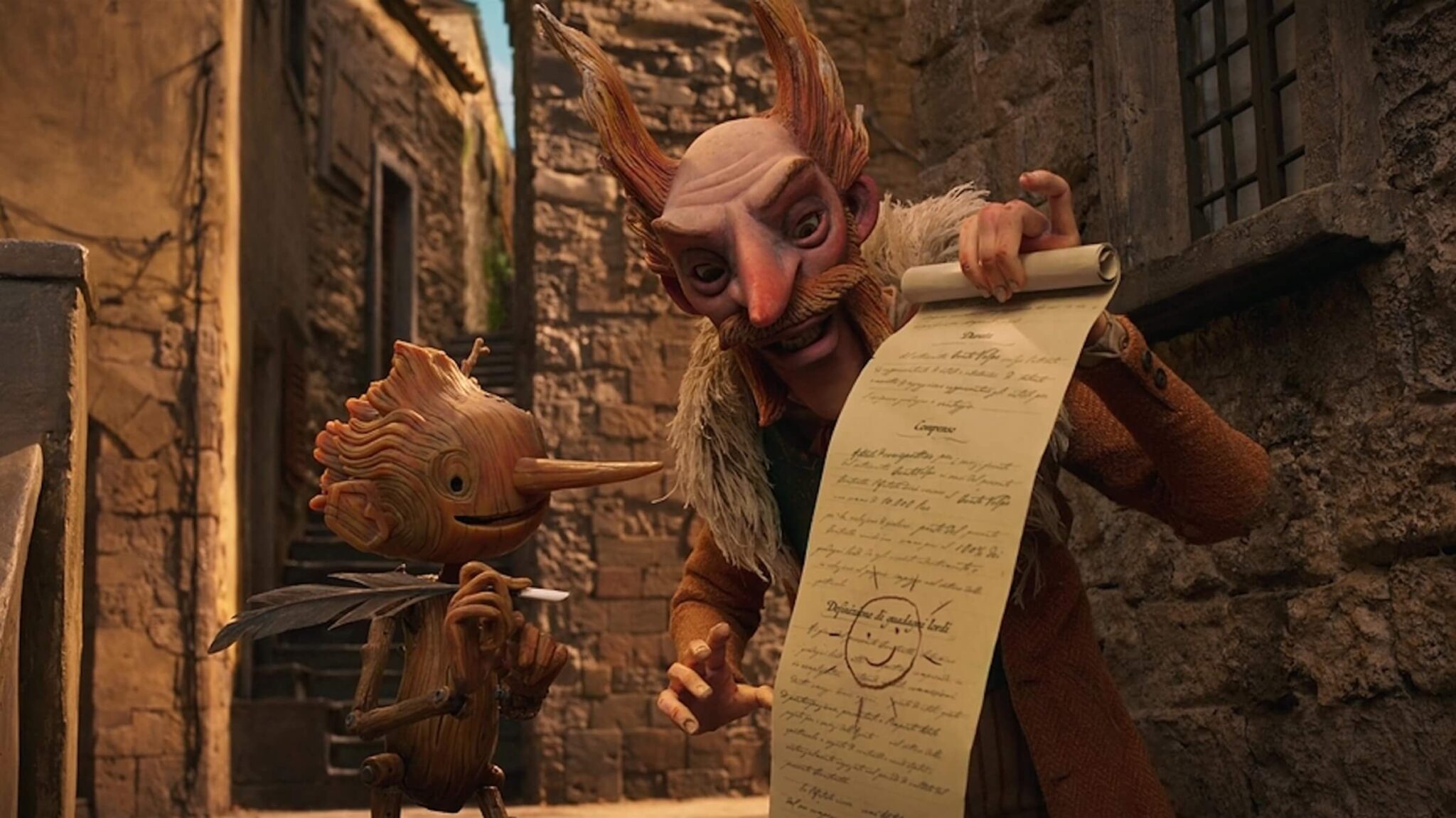Story Lessons from Get Out Using the Nutshell Technique

In my work as a script consultant, I discovered a chronic problem among aspiring screenwriters: 99% fail to tell a story. What the 99% do instead is present a situation. In order to explain the difference, I created the Nutshell Technique, a method whereby writers first identify eight interconnected elements required to properly tell a story.
What's completely unique about the Nutshell Technique — and how it differs from all the "beat sheet" methods out there — is that it's a dynamic structure. There is a relationship between these elements that's absolutely critical, and if you miss them, you are very likely to end up in the 99% who fail to tell a story.
For my clients and students, I created the Nutshell Technique form. It's a schematic that maps out these eight elements and their interrelationships so writers can see visually what's working and what's not. In my book The Nutshell Technique: Crack the Secret of Successful Screenwriting, which ranks #1 in user ratings in books on screenwriting on Amazon, I have thirty very different movies — everything from Casablanca to Pulp Fiction to August: Osage County — all laid out on this same form, so you can see just how universal this structure is in superior screenplays.
Let's look at the Nutshell Technique applied to one of my favorite movies of last year, the 2018 winner of the Oscar for Best Original Screenplay Get Out.
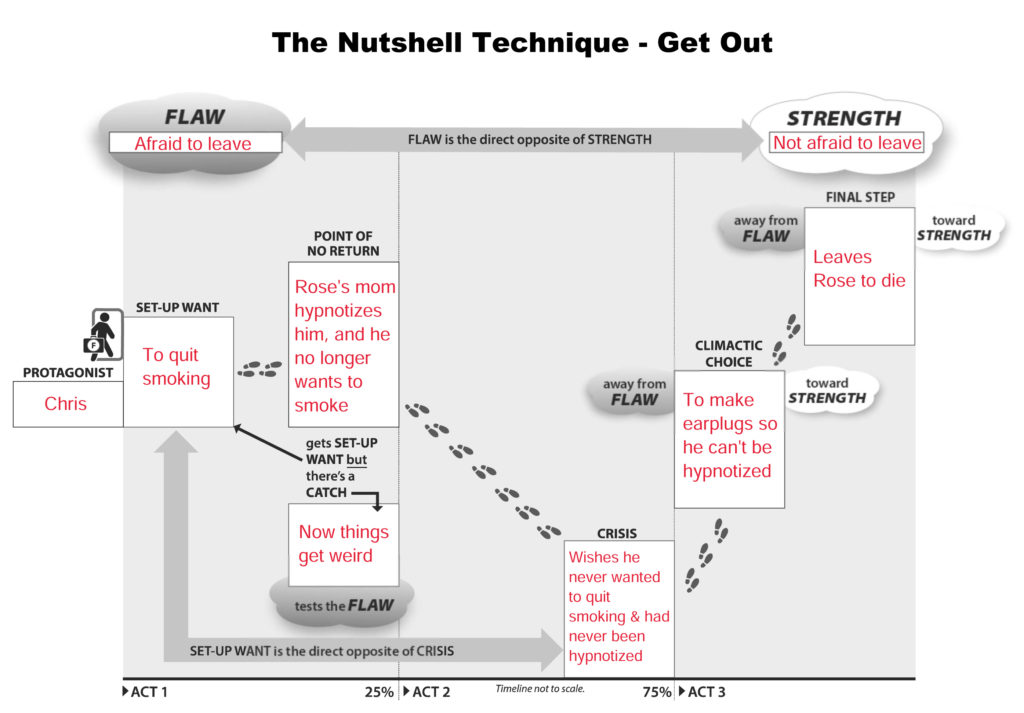
Here is my checklist for the Nutshell Technique form. To properly set up a story, all of the following must be true:
❐ Does the protagonist get their SET-UP WANT immediately and directly in the POINT OF NO RETURN?
❐ Does the protagonist get something immediately in the POINT OF NO RETURN that they don’t want, the CATCH?
❐ Is the CATCH the perfect test of the protagonist's FLAW?
❐ Is the CRISIS the lowest the protagonist can go?
❐ In the CRISIS, is the protagonist in the exact opposite state of mind or situation of where they were in the SET-UP WANT?
❐ In both the CLIMACTIC CHOICE and the FINAL STEP, does the protagonist move away from the FLAW and toward the STRENGTH?
❐ Are the FLAW and the STRENGTH exact opposites?
Let me walk through Get Out and how the Nutshell Technique works in it.
Protagonist Chris's SET-UP WANT in his initial scenes is to quit smoking. He gets his SET- UP WANT in the event that demarcates the end of Act 1 and pushes us into Act 2, which I call the POINT OF NO RETURN. The POINT OF NO RETURN is Rose's mom hypnotizes him, and he no longer wants to smoke. In this POINT OF NO RETURN he achieves his initial SET- UP WANT to quit smoking but there is a big CATCH attached to its achievement: from this point forward things get weird.
The CATCH should be the perfect test of the protagonist's central FLAW, which in the case of Get Out's Chris is that he's afraid to leave others ever since he turned his back on his mother when she was dying. So Act 2 will be largely a test of this FLAW, and his inability to abandon others keeps him in harm's way and from seeing the truth about Rose.
Things go lower and lower for Chris until, captive in their basement, he hits rock bottom when he finds out the whole truth: he was hypnotized because he is about to have his brain removed and transplanted in another person's head. He has reached his CRISIS which is that he wishes he never wanted to quit smoking (which is implied, not spoken), because if he hadn't wanted to quit smoking, he never would have been hypnotized. The CRISIS is both his lowest point and also exactly the opposite of his SET-UP WANT to quit smoking.
In the third act, the protagonist will begin to move from the FLAW toward its opposite, the STRENGTH. In Get Out, Chris now moves from his FLAW of being afraid to leave toward its opposite: being not afraid to leave. Act 3 begins with the Climax wherein Chris makes the CLIMACTIC CHOICE to make earplugs so he can't be hypnotized, and then he is finally able to fight back. In the last scene of the movie, Chris takes his FINAL STEP and leaves Rose to die in the road, fully realizing the STRENGTH of being not afraid to leave.
In my last post, 3 Keys To Cracking Screenplay Structure, I wrote about how one of the keys is that every story is a version of “be careful what you wish for.” The protagonist wants something (the SET-UP WANT) and by the POINT OF NO RETURN at the 25% mark, they will get exactly what they wanted. One of the things I want to point out about Get Out's story Nutshell is that it's a great example of what I call having a "lowercase” want for the SET-UP WANT.
The SET-UP WANT is not necessarily the thing the protagonist wants the most. Nor is it necessarily the thing that the protagonist says that they want. The SET-UP WANT is simply two things: 1) it's the thing that the protagonist wants in their first scenes that they actually get in the POINT OF NO RETURN and 2) it's the thing that they want that is the opposite of what they want at the CRISIS.
Protagonist Chris wants a number of things at the beginning: for Rose's parents to know in advance that he's black, to not cut himself while shaving, to not be stressed out while packing, to not get chased off of the lawn with a shotgun. These are all things he wants in the first scenes, but he doesn't get any of them. The thing that he wants that he gets — the SET-UP WANT — is to quit smoking.
He gets this want in the POINT OF NO RETURN (Rose's mom hypnotizes him), but “be careful what you wish for”! Because while he gets his SET-UP WANT, he also gets something he doesn't want which is the CATCH (now things get weird). And this will eventually lead to even more irony as he experiences a complete, 180-degree reversal from the SET-UP WANT at the CRISIS: his brain is about to be removed and he wishes he never wanted to quit smoking and had never been hypnotized.
 Jill Chamberlain is a script consultant and the founder of The Screenplay Workshop (www.thescreenplayworkshop.org). Her book, The Nutshell Technique: Crack the Secret of Successful Screenwriting, ranks #1 in user ratings in books on screenwriting on Amazon. It is considered the go-to manual many professionals swear by and is on the syllabus for film schools across the U.S. including the acclaimed screenwriting program at Columbia University. Producer Callum Greene (Star Wars Episode 9, Crimson Peak, The Hobbit: The Desolation of Smaug) said Chamberlain's Nutshell Technique “cracks the code behind why we love the movies that we love. It will guide you to organically write the story you want to tell." Her guidance has fixed and fine-tuned scripts for major Hollywood studios, A-list writers, television showrunners, award-winning independent filmmakers and many spec screenwriters. Learn more and connect with Jill at jillchamberlain.com.
Jill Chamberlain is a script consultant and the founder of The Screenplay Workshop (www.thescreenplayworkshop.org). Her book, The Nutshell Technique: Crack the Secret of Successful Screenwriting, ranks #1 in user ratings in books on screenwriting on Amazon. It is considered the go-to manual many professionals swear by and is on the syllabus for film schools across the U.S. including the acclaimed screenwriting program at Columbia University. Producer Callum Greene (Star Wars Episode 9, Crimson Peak, The Hobbit: The Desolation of Smaug) said Chamberlain's Nutshell Technique “cracks the code behind why we love the movies that we love. It will guide you to organically write the story you want to tell." Her guidance has fixed and fine-tuned scripts for major Hollywood studios, A-list writers, television showrunners, award-winning independent filmmakers and many spec screenwriters. Learn more and connect with Jill at jillchamberlain.com.
Photo Credit: Universal Pictures
Tags
Get Our Screenwriting Newsletter!
Get weekly writing inspiration delivered to your inbox - including industry news, popular articles, and more!










